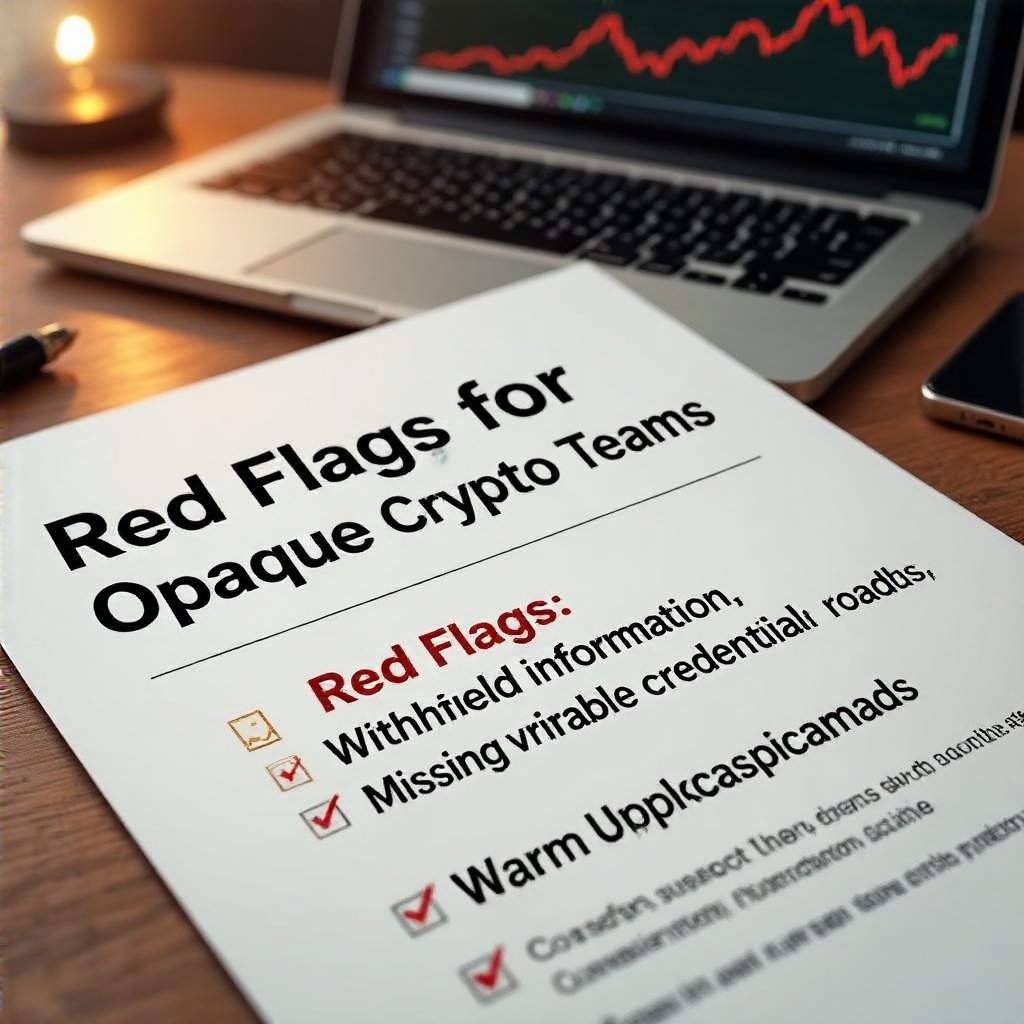The Dangers of Anonymous Crypto Teams

Transparency is not merely a virtue; it is a quantitative input into the expected value of an investment. When leadership remains hidden, information asymmetry rises, inflating risk and complicating reliable tokenomics analysis and incentive alignment. This expanded piece merges original insight with a data-driven framework to assess opacity versus disclosure.
- Trust and Information Asymmetry
- Red Flags and Warning Signs
- A Quantitative Risk Modeling Framework
- Best Practices for Due Diligence
- FAQ
Why Opaqueness Undermines Trust and Risk Assessment
Trust in crypto projects rests on verifiable data: team histories, on-chain activity, independent audits, and transparent governance. Opaque leadership raises information asymmetry, making exit scams, misaligned incentives, and covert token dumps more probable and costly in a probabilistic sense. From a modeling perspective, narratives without data inflate perceived value and introduce tail risks that dominate downside scenarios. For grounding, see the exit-scam indicators and contrast governance signals with token utility patterns such as those described in Airswap token utility. Broader scam awareness is reinforced by authoritative sources on crypto-scam warnings as well as practical guidance from the FBI on cryptocurrency scams.
Red Flags to Watch For
A robust due-diligence screen detects indicators that often accompany opacity. Expanded signals beyond the classic list include:
- Withheld or incomplete team information
- Unverifiable credentials or pseudonymous identities
- Promises of rapid gains without a clear roadmap
- Discrepancies between narrative and on-chain data
- Unclear or shifting tokenomics models
- Frequent leadership changes without documented rationale
Transparent projects typically publish detailed doxxing, verifiable track records, and a clear development cadence, enabling more reliable probability assessments. For a structured look at exit-scam tactics, see the exit-scam tactics guide. A concrete contrast is offered by the token-utility analysis from Airswap token utility, and by cross-cutting risk considerations in multi-chain DeFi strategy.

Assessing Risk: A Mathematical Perspective
From a quantitative lens, transparency reduces informational asymmetry, increasing the expected value of an investment. Opaque projects tend to exhibit higher variance in outcomes, often skewed toward failure or exit scams. A framework built on token distribution curves, incentive alignment metrics, and on-chain attestations provides a data-driven path to risk management. In practice, one compares narratives against measurable signals—token vesting schedules, audit outcomes, and observable governance participation. See how similar analysis applies in Airswap's governance and incentive design through token utility patterns, and consider the cross-chain complexity highlighted in Solana interoperability. For broader risk signals, the multi-chain perspective offers necessary context. If you want a warning framework, consult the crypto-scam resources linked earlier from the SEC and FBI.
| Aspect | Transparent Team | Anonymous Team |
|---|---|---|
| On-chain verifiability | High, with audit trails | Low or absent |
| Incentive alignment | Documented governance, clear vesting | Often opaque or shifting |
| Risk premium | Lower, reflected in market price stability | Higher, due to information gaps |
Concrete examples reinforce the framework: comparing a transparent token model to a leaky bucket scenario helps quantify expected value differences. The linked internal references also illustrate how exit-scam indicators and governance signals translate into probability estimates. For broader context on cross-chain risk, see the Solana interoperability piece and the multi-chain strategy analysis.

Best Practices for Due Diligence
Adopt a structured, repeatable process to separate signal from noise. Start with public records checks, verify team identities, review token metrics with a calculator, and assess audit outcomes. Always triangulate on-chain data with off-chain disclosures. For hands-on comparison, consider the governance and token mechanics described in Airswap token utility, and examine cross-chain risk implications in Solana interoperability. If opportunistic promises surface, recall the exit-scam indicators and the protection guidance available at exit-scam indicators and the FBI/SEC resources cited above.

Best-Practice Checklist
- Require verifiable team profiles and third-party verifications
- Demand audited financials and open-source governance records
- Analyze tokenomics for sustainability and non-dilutive incentives
- Validate roadmaps with on-chain milestones and public commits
FAQ
Q: Can a project with a transparent team still fail?
A: Yes. Transparency reduces risk, but it cannot guarantee success. It improves the probability-weighted outcome by lowering information asymmetry and aligning incentives.
Q: How many internal links should appear?
A: Up to four internal links may be woven into the text, using natural phrasing and the required anchor formats. Examples include references to Airswap token utility, exit-scam tactics, Solana interoperability, and exit-scam indicators.
Q: Which external sources should I consult for authority?
A: Foundational risk guidance comes from Investopedia's tokenomics overview, the SEC's crypto asset scam alerts, and the FBI’s cryptocurrency scam resources for practical prevention tips.
Conclusion: The Value of Transparency
In crypto investing, a rigorous, quantitatively minded approach beats hype. Assess data, question narratives, and verify claims. Projects with transparent teams offer better probability-weighted outcomes, while opaque teams embody a statistical trap with a higher risk premium that often fails to pay off. Treat transparency as a core parameter in your risk model to improve expected value and avoid the leaky-bucket syndrome that comes with hidden agendas.
